How to choose the packaging of coffee takeout? Which take-out coffee cup is better _ take-out coffee cup cost
Today, when I was surfing the Internet, I saw a male netizen say that he noticed that the coffee cup lids that appeared inadvertently are simply unknown modern miracles.
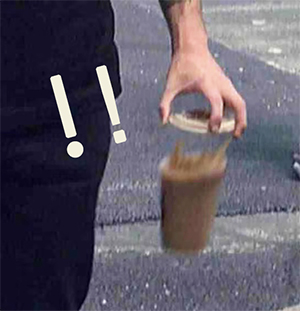
Cup lid: huh? Are you talking about me?
This. On weekdays, it is true that less attention is paid to it.
Ahem, but to get back to the point, I wonder if people really pay attention to the difference between shop and shop, cup lid and cup lid when they order take-out coffee and milk tea.
The friend said, "Cup lid? I didn't pay attention to it, and I don't usually expect to appreciate its design. "
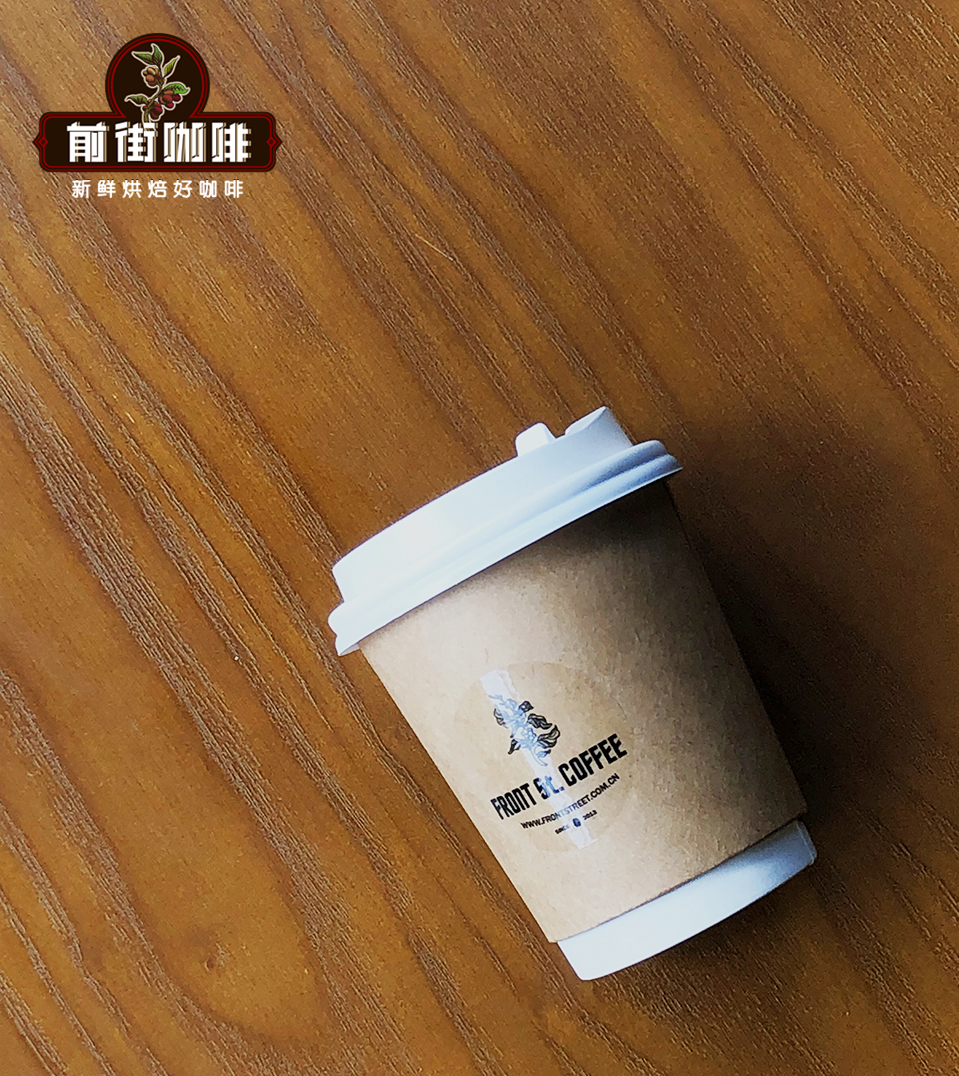
But it is such a humble small design that can reflect the great wisdom of the designer.
American architects Louise Harpman and Scott Specht have collected cup lids while doing architectural design for many years, and have co-authored a book focusing on the design and extension of coffee cup lids.
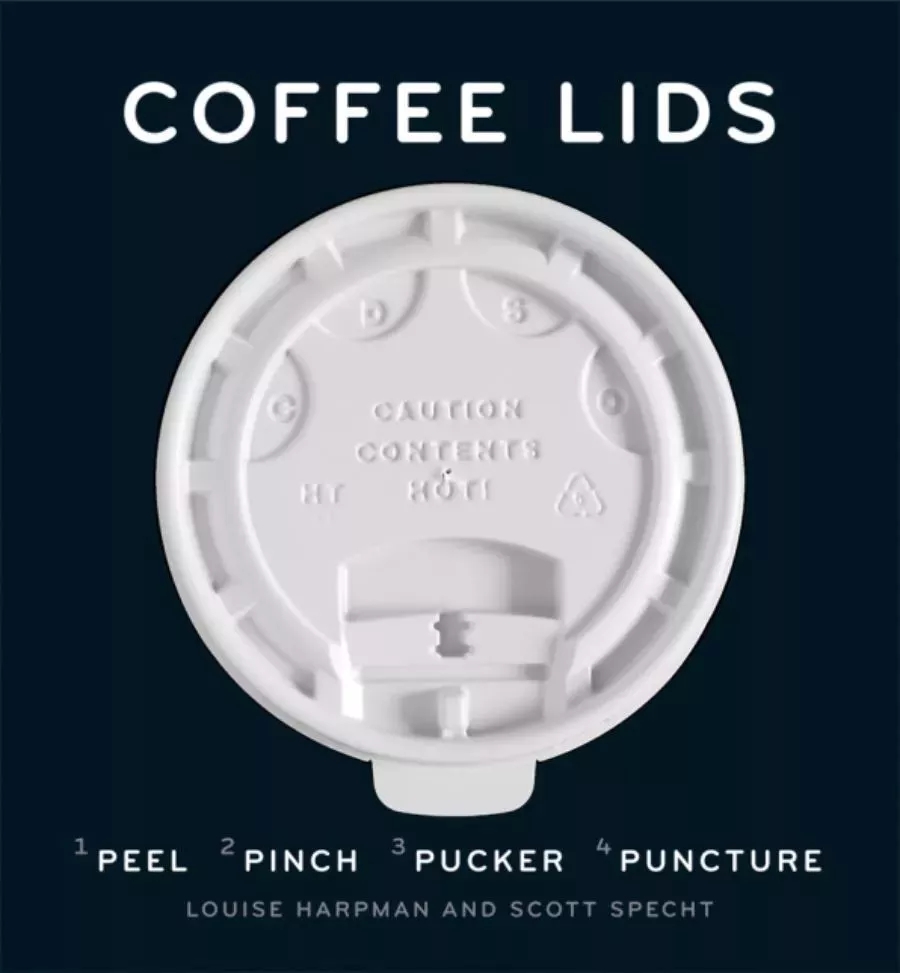
Photo: Benjamin English/ Princeton Architecture Press
This book classifies all kinds of coffee cup lids into four types:
Stripping (Peel)
Pinch type (Pinch)
Snout (Pucker)
Stamping type (Puncture)
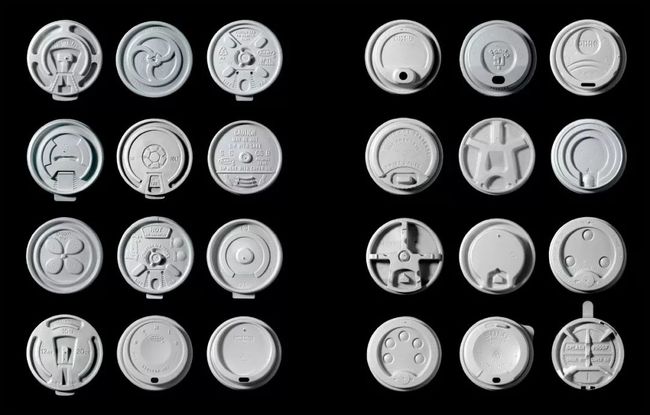
Photo: Benjamin English/ Princeton Architecture Press
In the beginning, the lid of the coffee cup was a piece of thick cardboard with no special features. It was only later that the plastic lid appeared-the edge of the lid had a circular edge to increase strength.
In the 1980s, there were cup lids with small holes that could be opened, so that they did not have to open the whole lid, replacing the previous ones with flat edges.
Stripping (Peel)
The two authors trace the invention of the cup lid back to 1953. This peeled cup lid, designed by Delbert E. Phinney, has been patented for this purpose. The so-called "stripping" means to tear back a little bit from the preset notch position, which can be fixed on the lid, which is still common today.
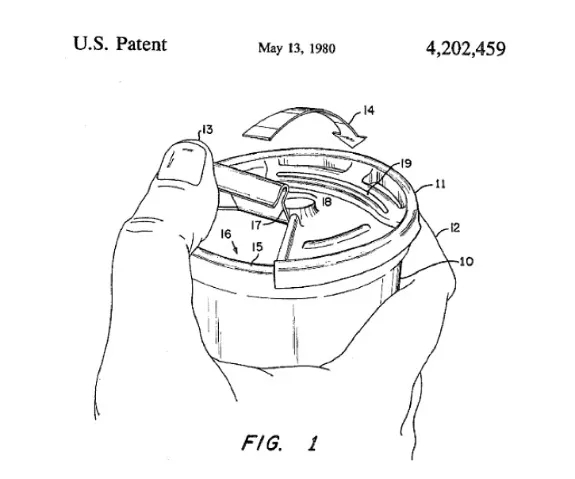
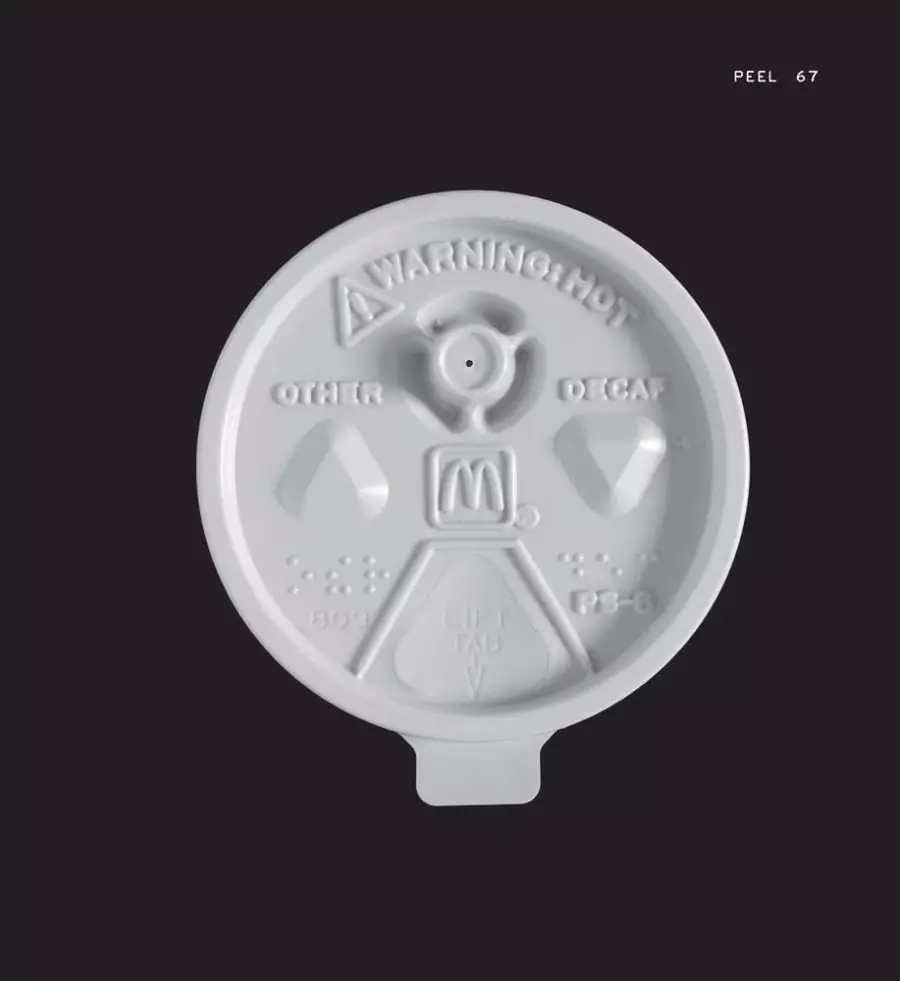
Photo: Benjamin English/ Princeton Architecture Press
(peeled cup lid (logo is not familiar with the face XD))
Pinch type (Pinch)
Similar to stripping, the difference is that when you open the lid, you need to use your thumb and index finger to buckle the lid down rather than rip it off completely.
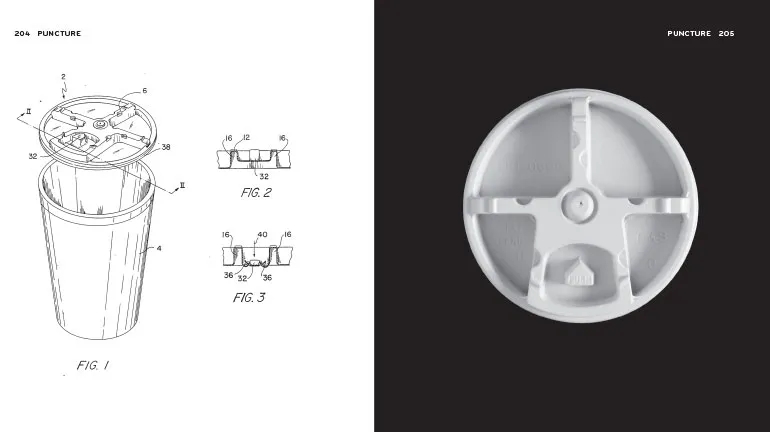
Photo: Benjamin English/ Princeton Architecture Press
Stamping type (Puncture)
Press the raised button down, and when the button is sunken, cracks will occur, which can not only keep the cover intact, but also avoid accidentally tearing the lid when pulling.
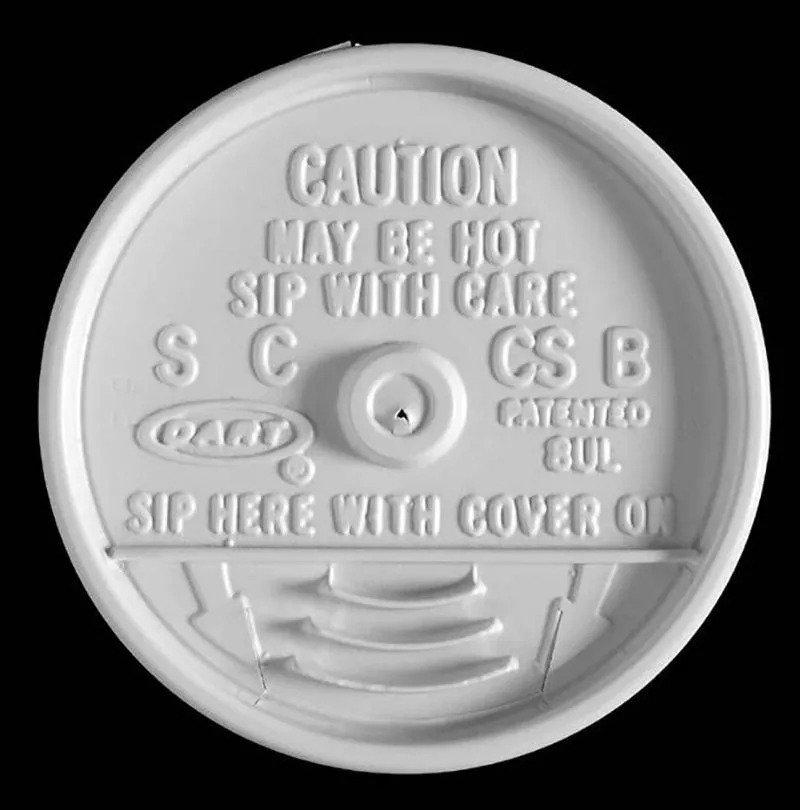
Photo: Benjamin English/ Princeton Architecture Press
(when you buckle your fingers down, it's easy to dip into the coffee.)
Snout (Pucker)
The most common type of cup lid today is the muzzle type, which drinks coffee directly through the hole in the lid. The lid protrudes on the outside and the grooves next to it are designed to prevent coffee from accidentally spilling and to prevent your nose from touching the lid. When drinking, the lips are completely glued to the lid, not the cup.
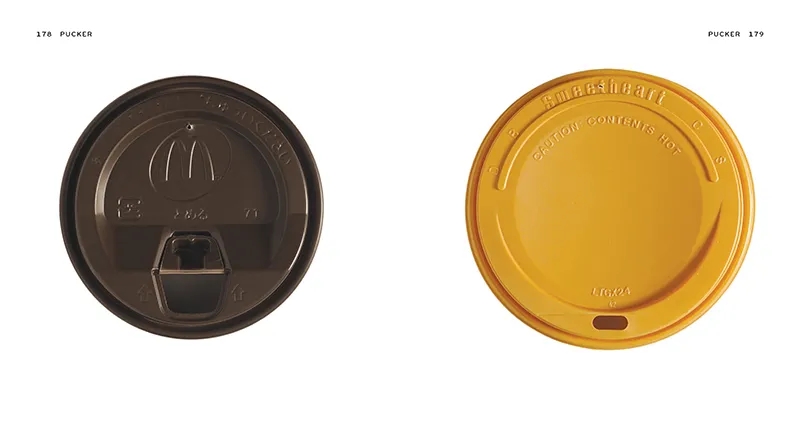
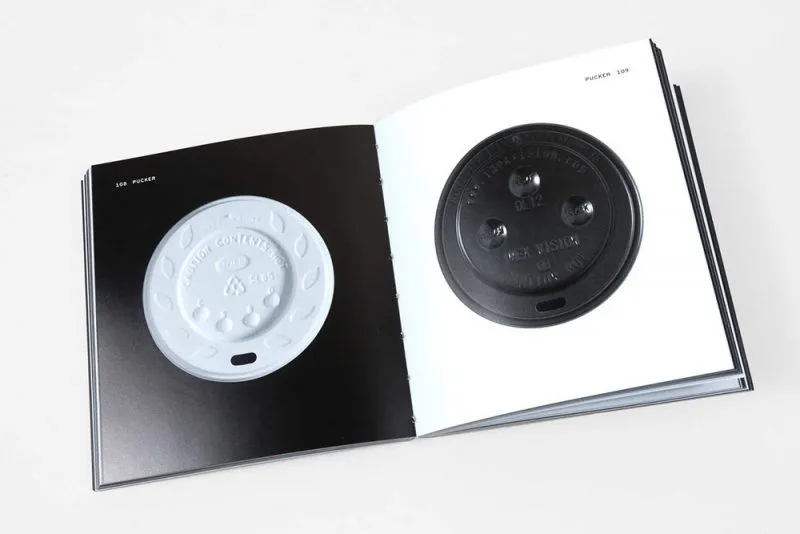
Photo: Benjamin English/ Princeton Architecture Press
People may not care too much about what is special about the cup lid design, after all, coffee is the protagonist. But the small cup lid looks ordinary, but there is great knowledge hidden in it.
In addition to these four, there is also a coffee cup lid called Viora Lid. It is also mug-mouthed, but simulates a mug full of coffee, increasing the area of the grooves so that the hot drink clings to the top instead of dangling around inside.
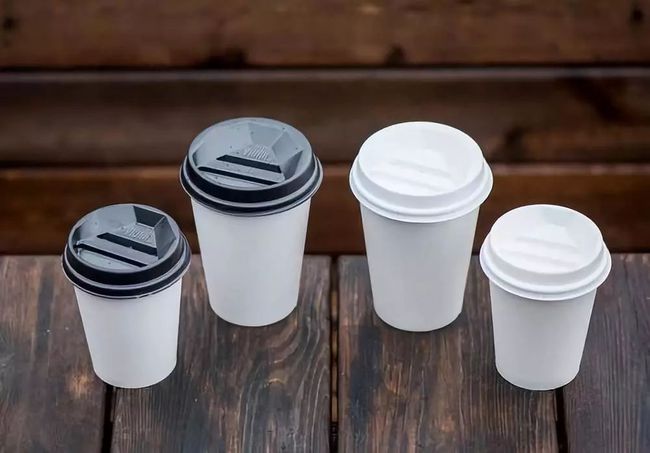
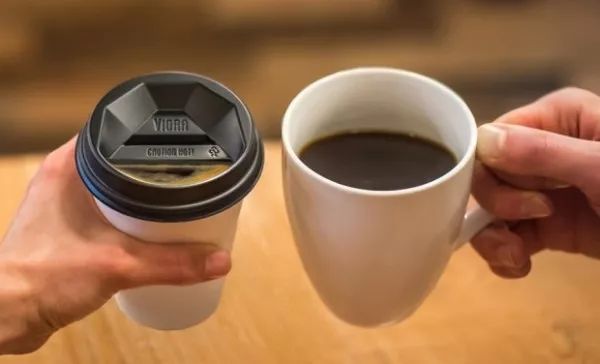
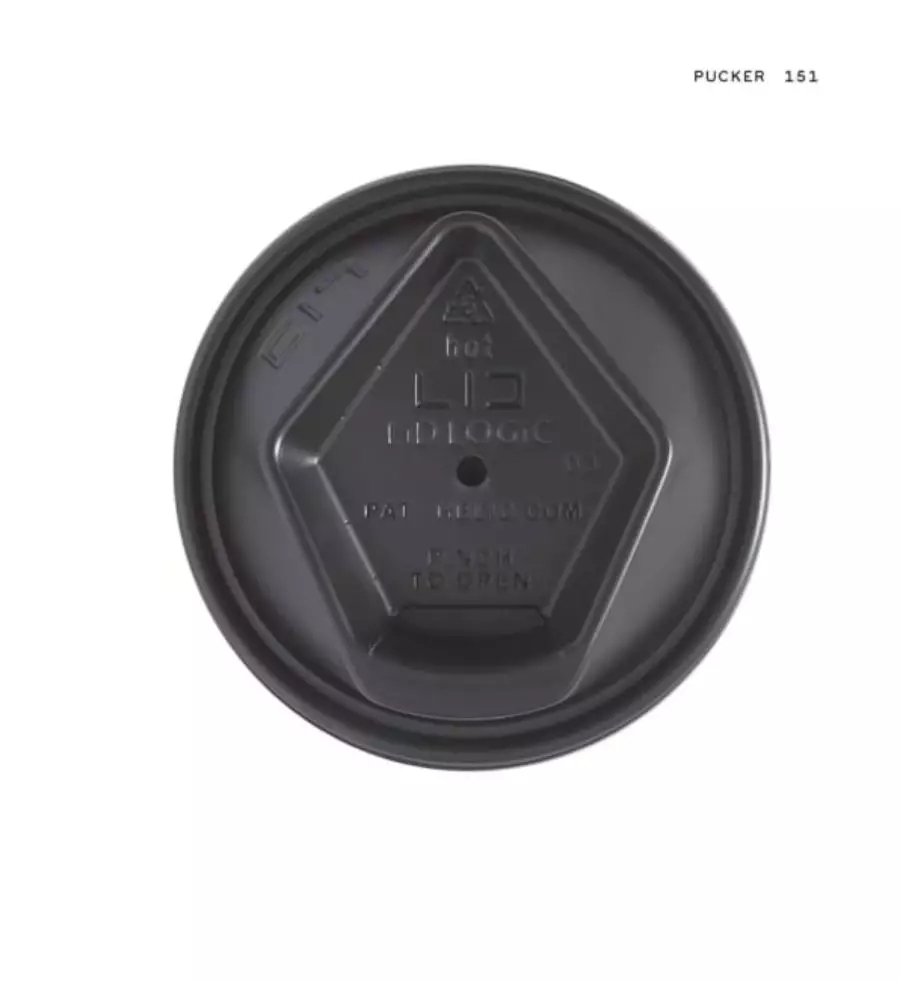
The architectural Viora lid, with a raised edge, imitates the shape of the mug and contributes to the aroma of coffee. Designers believe that smell is one of the core elements of the drinking experience. Making such a small change on the coffee lid can greatly improve the consumer experience, which is believed to be something that many coffee shops are willing to do.
Oh by the way, I'm sure you've been curious about those lids with only symbols and acronyms, right? Wonder what those weird symbols above represent, don't you? If you are careful, you will find that there is a triangle on the lid of many hot drinks, with the number 5 in the middle. In fact, it shows that the material of this cup lid is made of No. 5 plastic polypropylene (PP) and can withstand high temperature.
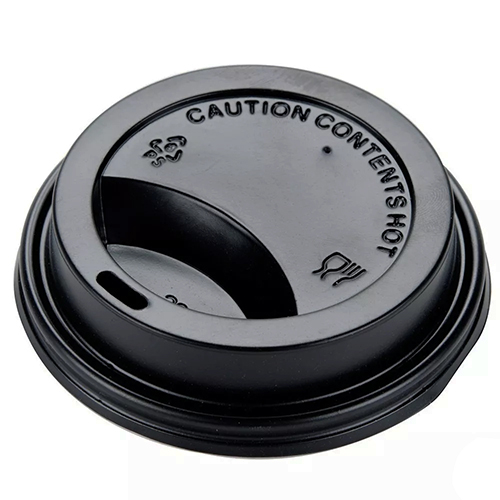
There must be a "warning" on the lid of each hot drink cup. Its appearance is even more important than the printing of the brand name of coffee.
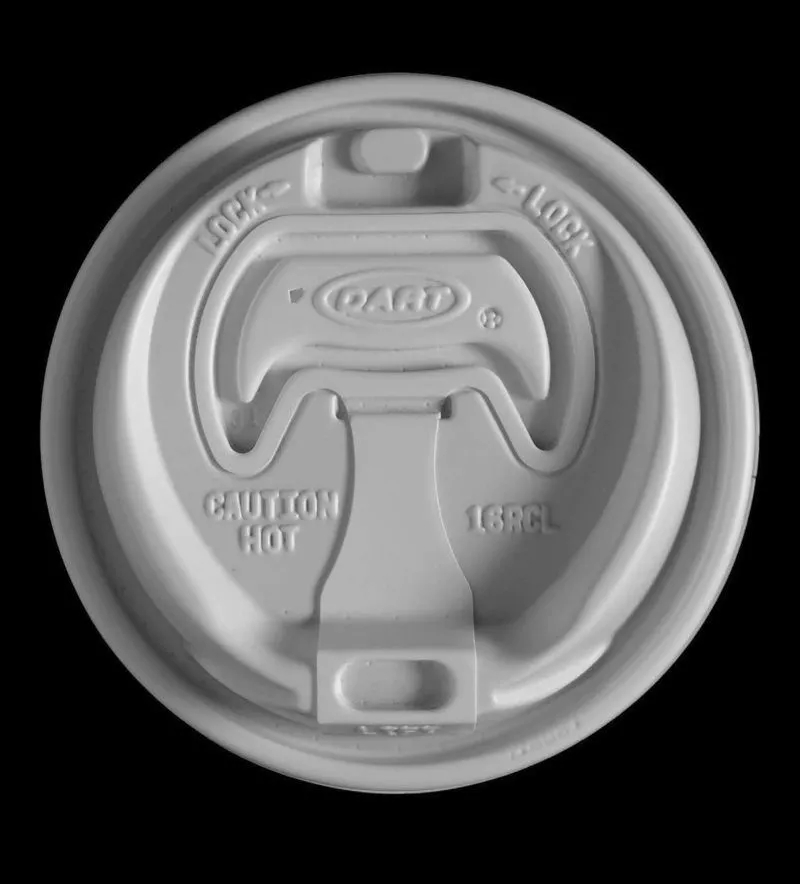
This is because in 1994, a woman accidentally spilled a hot drink from McDonald's, causing her third-degree scald. After that, all coffee cup lids must be marked with warnings such as HOT, CAUTION, ATTENTION and so on.
We can see these small symbols every day, but because they appear so many times and take them for granted, few people will ask what they mean.
At present, coffee cup lids are still mostly made of plastic, which is not very environmentally friendly. However, in the future, coffee cup lids, take-out coffee cups, and even applications in other fields will tend to be replaced by materials, such as cups, lids, straws, tables and chairs, daily necessities, and so on.
Photo Source: Internet
For more information about coffee beans, please follow the coffee workshop (Wechat official account cafe_style)
For professional coffee knowledge exchange, please add WeChat kaixinguoguo0925.
Important Notice :
前街咖啡 FrontStreet Coffee has moved to new addredd:
FrontStreet Coffee Address: 315,Donghua East Road,GuangZhou
Tel:020 38364473
- Prev
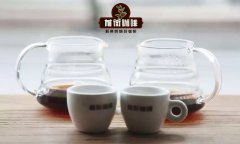
What kind of equipment does the new coffee shop need? Hot mom, does the coffee machine work? How about EK43 bean grinder?
There may be many people who want to open a coffee shop because they want to choose their own state of life and achieve [freedom of time], but actually want to experience a new role [as a boss] (do not accept rebuttal) is to do business? Or a dream? Everyone has a dream of opening a shop. In TV idol plays, it is always customary to write about the life of the owner of the cafe as leisurely, romantic and fragrant coffee.
- Next
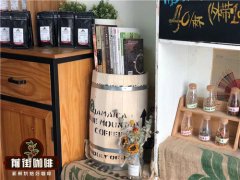
The reason for the failure of the partnership to open the coffee shop? The pros and cons of opening a coffee shop by a key partnership that led to the closure of a coffee shop
Jack Ma, the head of Alibaba, summed up one of the golden sentences: today is cruel, tomorrow is more cruel, the day after tomorrow is beautiful, but most people die in the evening tomorrow, unable to see the sunrise the day after tomorrow. The pressure of starting a business is great, and the market competition is cruel, which is the same in any era. The business world has always been one chicken dead and one chicken crowing. As soon as the front foot of your store is closed, someone will pick up the plate. This is
Related
- The milk tea cup becomes smaller?! Overlord Tea Girl launches a new "Return to Yunnan" series
- Accused of selling counterfeit and high-priced coffee beans! Well-known boutique coffee brand "Oukelao" bowed and apologized!
- How to make espresso dumplings? Can I eat coffee and glutinous rice balls together?
- Save the unformed and stagnant powder cakes in one second! What is the problem with stagnant water in the powder bowl of the espresso machine?
- What does hand-brewed coffee stop mean? Why is it not recommended to make coffee by hand?
- Is it normal to smell like coffee? Why does coffee smell like alcohol? What's wrong with the strong smell of cold extract ice dripping ice brewed coffee?
- How to solve the problem that hand-brewed coffee extraction takes too long? Why is the water flowing so slowly when making coffee?
- The main points of making Australian white coffee, the proportion details, how does Australian white properly foam and blend the flowers?
- Can ice water make cold extract coffee? What is the difference between room temperature water and ice water for making cold coffee?
- What milk is best for making latte and white Dirty coffee? What is the difference between different brands of fresh milk and pure milk for making coffee?

